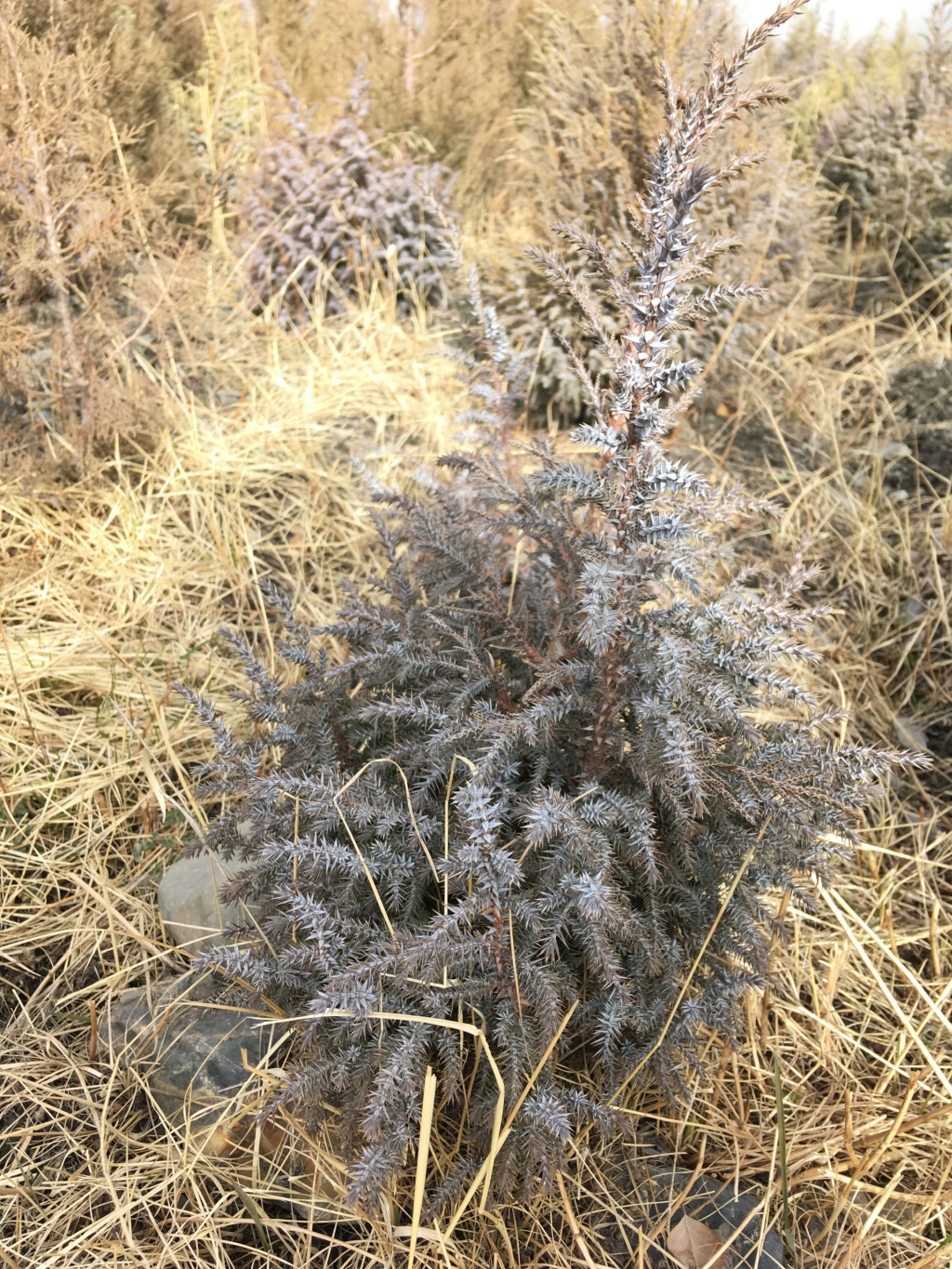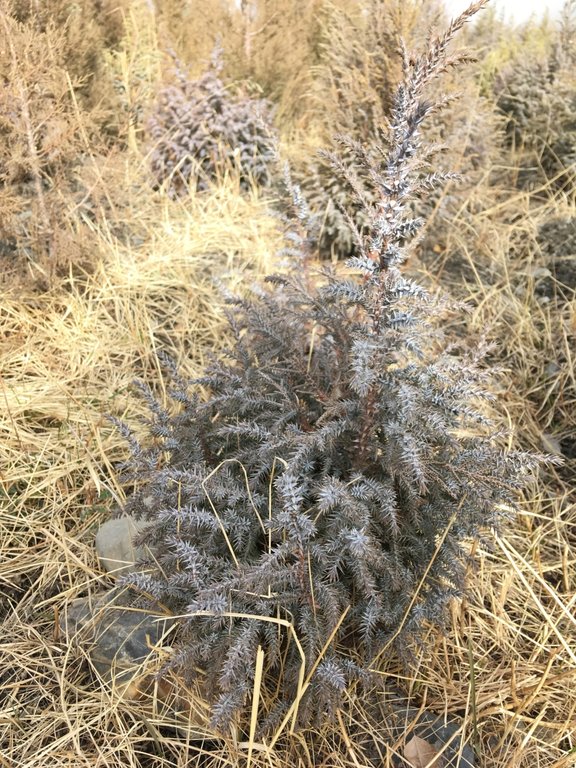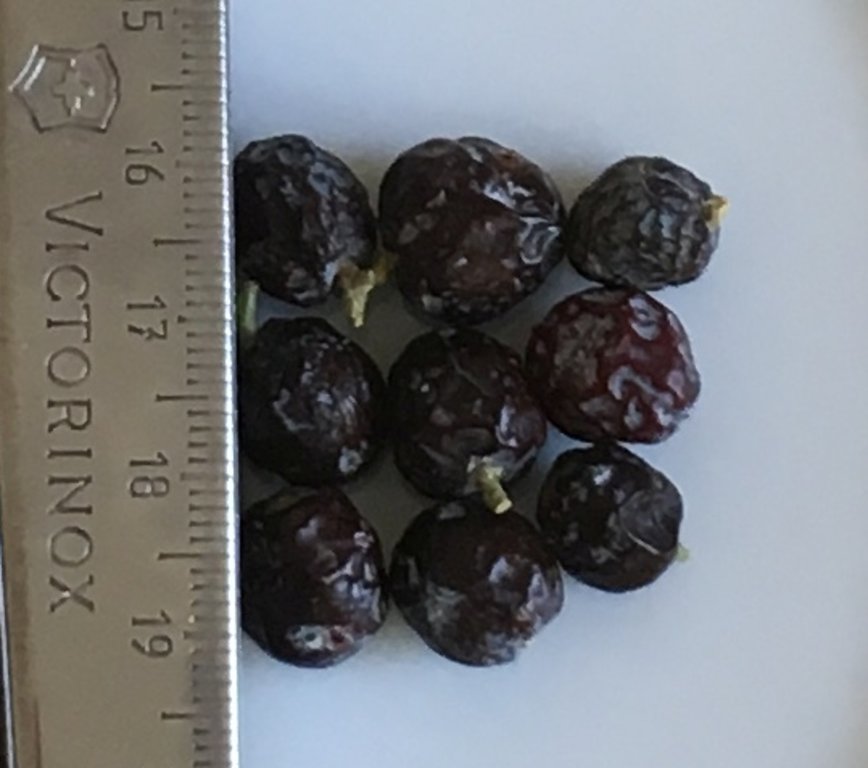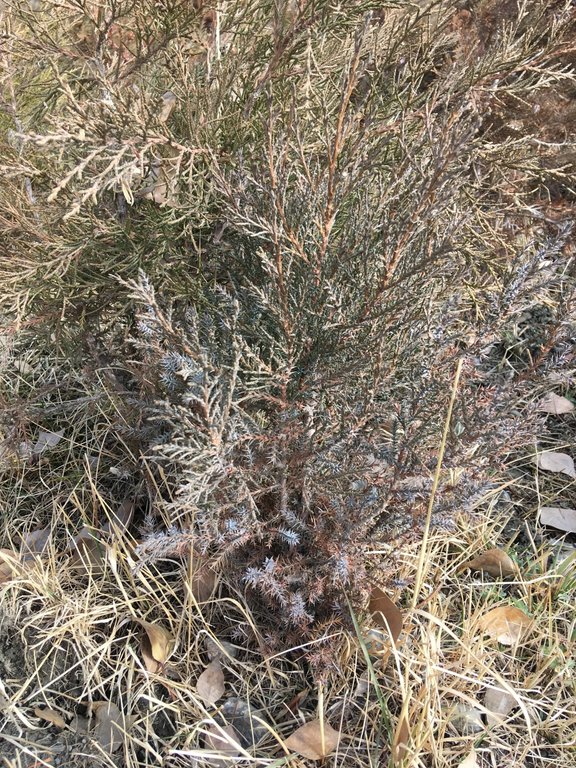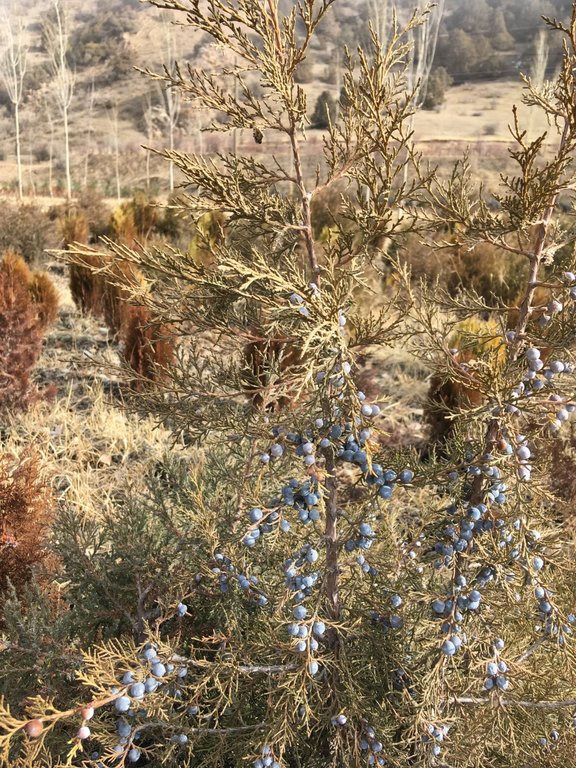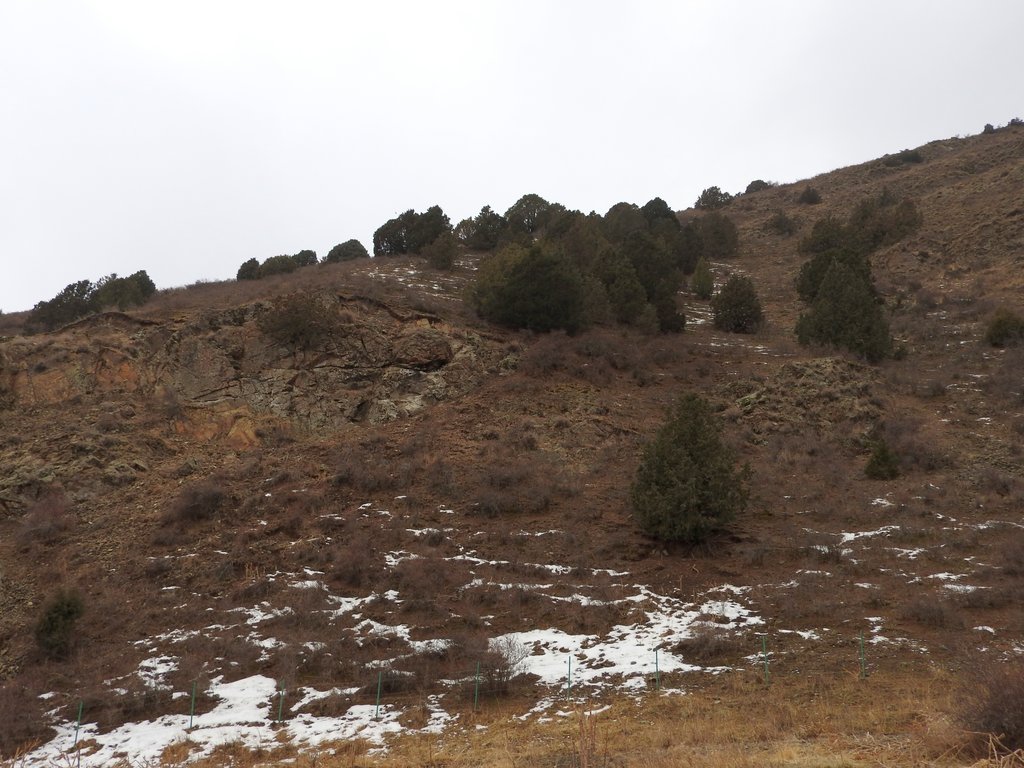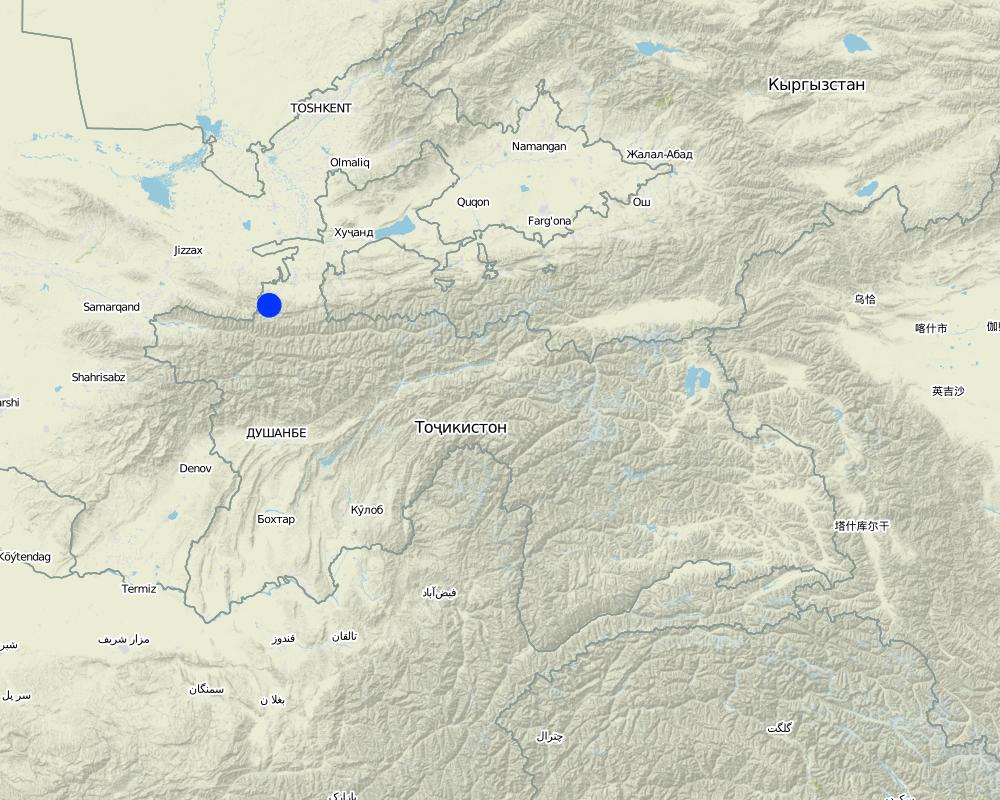Cultivation of local juniper species for rehabilitation of degrading woodland pastures [Tajikistan]
- Creation:
- Update:
- Compiler: Stefan Michel
- Editor: –
- Reviewer: Umed Vahobov
Выращивание саженцев арчы для восстановления деградирующего редколесья горных пастбищ.
technologies_4295 - Tajikistan
View sections
Expand all Collapse all1. General information
1.2 Contact details of resource persons and institutions involved in the assessment and documentation of the Technology
Key resource person(s)
land user:
Shodiev Fakhriddin
Shahriston Forestry Enterprise
Tajikistan
Name of project which facilitated the documentation/ evaluation of the Technology (if relevant)
Strengthening of Livelihoods through Climate Change Adaptation in Kyrgyzstan and TajikistanName of the institution(s) which facilitated the documentation/ evaluation of the Technology (if relevant)
GIZ Tajikistan (GIZ Tajikistan) - Tajikistan1.3 Conditions regarding the use of data documented through WOCAT
The compiler and key resource person(s) accept the conditions regarding the use of data documented through WOCAT:
Yes
1.4 Declaration on sustainability of the described Technology
Is the Technology described here problematic with regard to land degradation, so that it cannot be declared a sustainable land management technology?
No
1.5 Reference to Questionnaire(s) on SLM Approaches (documented using WOCAT)
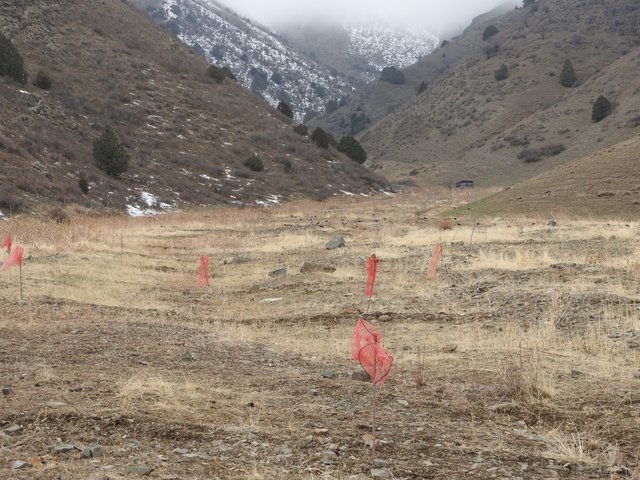
Disaster risk reduction and sustainable land-use by integrated … [Tajikistan]
A site affected by a debris flow was rehabilitated by joint communal work and integrated preventive measures addressing the upper catchment as well as the valley and the debris conus were implemented in collaboration of community, individual farmers, Committee of Emergency Situations and forestry enterprise.
- Compiler: Stefan Michel
2. Description of the SLM Technology
2.1 Short description of the Technology
Definition of the Technology:
The local species of juniper trees (Juniperus seravschanica, Juniperus turkestanica and Juniperus semiglobosa) are rarely rejuvenating under conditions of intensive grazing and are difficult to propagate in nurseries. The technology describes the propagation of these important trees from locally collected seeds and their cultivation.
2.2 Detailed description of the Technology
Description:
The technology is used to produce seedlings of juniper trees in the forestry nursery for further replanting in the natural juniper woodlands of the local forestry enterprise. Juniper woodlands are important ecosystems of the mountains of Central Asia, which are typically used for livestock grazing. The tree cover fulfills important functions for the maintenance of ecosystem services – local microclimate, regulation of water infiltration and surface runoff, biodiversity, esthetic value and recreation, fuelwood etc. The local juniper species rarely rejuvenate naturally. Factors hampering natural rejuvenation include intensive grazing, competition by other plant species and weather conditions. Loss of old juniper trees due to natural losses, damage and cutting combined with lacking rejuvenation causes the degradation and loss of juniper stands. Forestry enterprises in Central Asia often in such situations instead of the difficult to cultivate and slowly growing native juniper often plant non-native arborvitae Thuja spec. These non-native species do not provide the natural ecosystem functions of native juniper and are less adapted to the local site conditions.
The purpose of the described technology is therefore the provision of planting material for the rehabilitation of degraded juniper woodland pastures with native trees.
Forestry workers collect ripe juniper fruits from their natural stands during late fall (November – December). The fruits are than mixed with sand and stored in a cold place until spring, or they are further processed to accelerate germination.
In the first case in spring the fruits are crushed on a clean concrete surface either by trampling with boots or by using a vehicle. Afterwards the crushed fruits are washed and air-dried. With the help of wind and a sieve the dried seeds are cleaned from other parts of the fruits. The seeds are then stored under a 5 cm layer of sand until fall and sown in fall (October-November)
In the second case the fruits are initially for one month stored in a barrel with water. Then the fruits are crushed and cleaned as described above. The cleaned seeding material will be stored in a pit, covered with moist sand mixed with some dung from horses or cattle. After one month the seeds are sown into the nursery.
In the area of the forestry enterprise brown bears feed on juniper fruits. In the bear feces many juniper seeds can be found, sometimes directly germinating. This “natural stratification” is sometimes used by forestry workers if they find substantial amounts of bear feces consisting of juniper fruits.
The seeds are sown directly into the soil in the nursery. Each, germination rate and survival are 90%. After five years the seedlings have grown to a height of about 20-30 cm, their roots reach 20 cm deep into the soil and they are ready for replanting.
The seedlings are carefully dug out, deep enough not to damage the root system and together with the earth covering the roots. They are wrapped in plastic bags for keeping the earth cover of the roots during transportation. During the planting the seedlings are put into the tree pits together with the soil from the nursery still covering the root system. The planted seedlings are watered.
After planting the seedlings are five years cared for, including weeding and if necessary watering either from a canal, if available, or with barrels.
The use of containers for seeding and replanting has not yet been tried. It may protect the root system during replanting and reduce the amount of soil to be used for this purpose. On the other hand the technology without containers is not dependent on their availability, no garbage in form of plastic containers is left in the tree pits and the larger amount of soil from the nursery may ease establishment of the seedlings at the woodland rehabilitation site.
2.3 Photos of the Technology
2.5 Country/ region/ locations where the Technology has been applied and which are covered by this assessment
Country:
Tajikistan
Region/ State/ Province:
Sughd
Further specification of location:
Shahriston district; Shahriston Forestry Enterprise
Specify the spread of the Technology:
- applied at specific points/ concentrated on a small area
Is/are the technology site(s) located in a permanently protected area?
No
Comments:
The approximate locatoion of the nursery is indicated. The planting of produced seedlings takes place in different areas.
Map
×2.6 Date of implementation
If precise year is not known, indicate approximate date:
- 10-50 years ago
2.7 Introduction of the Technology
Specify how the Technology was introduced:
- through land users' innovation
Comments (type of project, etc.):
The technology is implemented by Shahriston Forestry Enterprises since several decades.
3. Classification of the SLM Technology
3.1 Main purpose(s) of the Technology
- reduce, prevent, restore land degradation
- conserve ecosystem
- preserve/ improve biodiversity
- adapt to climate change/ extremes and its impacts
- create beneficial social impact
3.2 Current land use type(s) where the Technology is applied
Land use mixed within the same land unit:
Yes
Specify mixed land use (crops/ grazing/ trees):
- Silvo-pastoralism

Grazing land
Extensive grazing:
- Semi-nomadic pastoralism
- Transhumant pastoralism
Animal type:
- cattle - dairy
- cattle - non-dairy beef
- goats
- horses
- sheep
Products and services:
- meat

Forest/ woodlands
- (Semi-)natural forests/ woodlands
(Semi-)natural forests/ woodlands: Specify management type:
- Dead wood/ prunings removal
- Non-wood forest use
Type of (semi-)natural forest:
- temperate mountain systems natural vegetation
Are the trees specified above deciduous or evergreen?
- mixed deciduous/ evergreen
Products and services:
- Fuelwood
- Other forest products
- Grazing/ browsing
- Nature conservation/ protection
- Recreation/ tourism
- Protection against natural hazards
3.3 Has land use changed due to the implementation of the Technology?
Has land use changed due to the implementation of the Technology?
- No (Continue with question 3.4)
3.5 SLM group to which the Technology belongs
- natural and semi-natural forest management
- pastoralism and grazing land management
3.6 SLM measures comprising the Technology

vegetative measures
- V1: Tree and shrub cover

management measures
3.7 Main types of land degradation addressed by the Technology

soil erosion by water

biological degradation
- Bc: reduction of vegetation cover
- Bh: loss of habitats
- Bq: quantity/ biomass decline
- Bs: quality and species composition/ diversity decline
3.8 Prevention, reduction, or restoration of land degradation
Specify the goal of the Technology with regard to land degradation:
- prevent land degradation
- reduce land degradation
4. Technical specifications, implementation activities, inputs, and costs
4.3 Establishment activities
| Activity | Timing (season) | |
|---|---|---|
| 1. | Collection of fruits from natural juniper stands | November-December |
| 2. | Stratification, cleaning of seeds | Winter - spring |
| 3. | Seeding | Winter or October-November |
| 4. | Replanting | Fall, five years after seeding |
| 5. | Watering, weeding | Each summer, up to five years |
Comments:
Watering not always needed and/or possible. Often only once watered during first summer after replanting.
4.4 Costs and inputs needed for establishment
Comments:
The technology is implemented in the frame of the regular activities of the state forestry enterprise. No calculation of costs was available during the time of the documentation.
4.5 Maintenance/ recurrent activities
Comments:
All maintenance activities (weeding, watering) are above indicated as establishment activities. After the planted juniper are established no further maintenance is required.
5. Natural and human environment
5.1 Climate
Annual rainfall
- < 250 mm
- 251-500 mm
- 501-750 mm
- 751-1,000 mm
- 1,001-1,500 mm
- 1,501-2,000 mm
- 2,001-3,000 mm
- 3,001-4,000 mm
- > 4,000 mm
Specifications/ comments on rainfall:
Rainfall is highly variable depending on altitude and aspect.
Indicate the name of the reference meteorological station considered:
Shahriston (https://en.climate-data.org/asia/tajikistan/sughd-province/shahriston-28044/)
Agro-climatic zone
- sub-humid
- semi-arid
Climate depends in altitude and aspect. At higher elevation and northern (eastern and western) aspect climate tends towards subhumid.
5.2 Topography
Slopes on average:
- flat (0-2%)
- gentle (3-5%)
- moderate (6-10%)
- rolling (11-15%)
- hilly (16-30%)
- steep (31-60%)
- very steep (>60%)
Landforms:
- plateau/plains
- ridges
- mountain slopes
- hill slopes
- footslopes
- valley floors
Altitudinal zone:
- 0-100 m a.s.l.
- 101-500 m a.s.l.
- 501-1,000 m a.s.l.
- 1,001-1,500 m a.s.l.
- 1,501-2,000 m a.s.l.
- 2,001-2,500 m a.s.l.
- 2,501-3,000 m a.s.l.
- 3,001-4,000 m a.s.l.
- > 4,000 m a.s.l.
Indicate if the Technology is specifically applied in:
- not relevant
Comments and further specifications on topography:
Nursery at terrace of valley, woodlands at mountain slopes of varying steepness and altitudinal zones.
5.3 Soils
Soil depth on average:
- very shallow (0-20 cm)
- shallow (21-50 cm)
- moderately deep (51-80 cm)
- deep (81-120 cm)
- very deep (> 120 cm)
Soil texture (topsoil):
- coarse/ light (sandy)
- medium (loamy, silty)
Topsoil organic matter:
- high (>3%)
- medium (1-3%)
If available, attach full soil description or specify the available information, e.g. soil type, soil PH/ acidity, Cation Exchange Capacity, nitrogen, salinity etc.
Soil at nursery site may differ from conditions at the actual woodlands. Soil conditions in juniper woodlands can be very diverse.
5.4 Water availability and quality
Ground water table:
5-50 m
Availability of surface water:
medium
Is water salinity a problem?
No
Is flooding of the area occurring?
No
Comments and further specifications on water quality and quantity:
Juniper typically grows in areas without ground water influence, but locally and where deforestation has not impacted the stands too much, juniper can also grow in riparian areas outside of the immediate influence of the river and subsoil water.
5.5 Biodiversity
Species diversity:
- medium
Habitat diversity:
- medium
Comments and further specifications on biodiversity:
Biodiversity in juniper woodlands varies depending on the specific type of vegetation and use intensity.
5.6 Characteristics of land users applying the Technology
Indicate other relevant characteristics of the land users:
The land-user applying the technology is the state forestry enterprise.
5.7 Average area of land used by land users applying the Technology
- < 0.5 ha
- 0.5-1 ha
- 1-2 ha
- 2-5 ha
- 5-15 ha
- 15-50 ha
- 50-100 ha
- 100-500 ha
- 500-1,000 ha
- 1,000-10,000 ha
- > 10,000 ha
Is this considered small-, medium- or large-scale (referring to local context)?
- small-scale
Comments:
Nursery is only few hectares. Woodland rehabilitation takes place in areas of several ten hectares each. The overall area belonging to the land use (forestry enterprise) is >10,000 ha.
5.8 Land ownership, land use rights, and water use rights
Land ownership:
- state
Land use rights:
- leased
Are land use rights based on a traditional legal system?
No
Comments:
The forestry enterprise issues permits for seasonal use of juniper woodlands for livestock grazing by associations or individual livestock herders.
5.9 Access to services and infrastructure
Comments:
Not relevant for this technology.
6. Impacts and concluding statements
6.1 On-site impacts the Technology has shown
Socio-economic impacts
Water availability and quality
irrigation water availability
Socio-cultural impacts
recreational opportunities
Ecological impacts
Water cycle/ runoff
water quantity
harvesting/ collection of water
surface runoff
evaporation
Soil
soil moisture
soil cover
soil loss
soil organic matter/ below ground C
Biodiversity: vegetation, animals
Vegetation cover
biomass/ above ground C
plant diversity
animal diversity
habitat diversity
Climate and disaster risk reduction
landslides/ debris flows
micro-climate
Specify assessment of on-site impacts (measurements):
There are no scientific assessments of on-site impacts available. The assesment here represents a rough guess of impact of juniper woodland rehabilitation in moderately degraded pasture areas.
6.2 Off-site impacts the Technology has shown
water availability
reliable and stable stream flows in dry season
downstream flooding
downstream siltation
damage on neighbours' fields
damage on public/ private infrastructure
Specify assessment of off-site impacts (measurements):
There are no scientific assessments of on-site impacts available. The assesment here represents a rough guess of impact of juniper woodland rehabilitation in moderately degraded pasture areas.
6.3 Exposure and sensitivity of the Technology to gradual climate change and climate-related extremes/ disasters (as perceived by land users)
Gradual climate change
Gradual climate change
| Season | increase or decrease | How does the Technology cope with it? | |
|---|---|---|---|
| annual temperature | increase | moderately | |
| seasonal temperature | dry season | increase | moderately |
| annual rainfall | decrease | moderately | |
| seasonal rainfall | wet/ rainy season | decrease | moderately |
| seasonal rainfall | dry season | decrease | moderately |
Comments:
Juniper trees grow at sites with a broad range of climate conditions, some of them rather extreme. They can therefore expected to cope with increasing aridity and short-term extremes at their natural stands. In the nursery drought can be compensated by watering, although intensive watering may hamper adaptability and survival of replanted saplings.
6.4 Cost-benefit analysis
How do the benefits compare with the establishment costs (from land users’ perspective)?
Short-term returns:
neutral/ balanced
Long-term returns:
slightly positive
How do the benefits compare with the maintenance/ recurrent costs (from land users' perspective)?
Short-term returns:
slightly positive
Long-term returns:
positive
Comments:
Rehabilitation of juniper woodlands provides only long-term economic benefits. Costs of cultivation in nurseries are partly compensated by combined growing of decorative coniferous treees (thuja, spruce) for commercial sale.
6.5 Adoption of the Technology
- single cases/ experimental
6.6 Adaptation
Has the Technology been modified recently to adapt to changing conditions?
No
6.7 Strengths/ advantages/ opportunities of the Technology
| Strengths/ advantages/ opportunities in the land user’s view |
|---|
| The technology is well established for the propagation of native juniper saplings and for the rehabilitation of juniper woodlands. |
| The technology has the advantage of allowing for the establishment/rehabilitation of tree stands with native species, which are adapted to local site conditions and are an integral component of the ecosystem. |
| The area of juniper woodlands in various stages of degradation in the country makes up many ten thousands of hectares. While resources (labour, nursery capacity) are prohibitive for replanting juniper in all areas, the technology allows for rehabilitation of key areas, identified by need and/or rehabilitation potential. In particular other forestry enterprises in the country with juniper woodlands could potentially adopt the technology. |
| Strengths/ advantages/ opportunities in the compiler’s or other key resource person’s view |
|---|
| Same as land user's view. |
| Same as land user's view. |
| Same as land user's view. |
6.8 Weaknesses/ disadvantages/ risks of the Technology and ways of overcoming them
| Weaknesses/ disadvantages/ risks in the land user’s view | How can they be overcome? |
|---|---|
| Substantial amount of work required. | Nothing suggested. |
| Juniper grows slower than other species. | Nothing suggested. |
| None mentioned |
| Weaknesses/ disadvantages/ risks in the compiler’s or other key resource person’s view | How can they be overcome? |
|---|---|
| Same as land user's view. | Consider facilitation of natural rejuvenation through grazing management (temporary exclusion of sites or reduction of grazing intensity or adaptation of herd compostion - no goats). |
| Same as land user's view. | Natutral feature of the native juniper tree species, which cannot be changed, but needs to be taken into consideration during production of planting material and in the management of the woodlands. |
| Over grazing may hamper success of woodland recovery. | Support establishment of replanted saplings through grazing management (temporary exclusion of sites or reduction of grazing intensity or adaptation of herd compostion - no goats). |
7. References and links
7.1 Methods/ sources of information
- field visits, field surveys
Site visit at nursery (November 2018), many site visits in juniper woodlands of Tajikistan and adjacent countries since 1993.
- interviews with land users
Interview with forest protection engineer of Shahriston Forestry Enterprise
- interviews with SLM specialists/ experts
Interview with forest protection engineer of Shahriston Forestry Enterprise, with GIZ experts Negmatjon Negmatov (agricultural expert) and Nodir Muhidinov (DRR expert).
- compilation from reports and other existing documentation
When were the data compiled (in the field)?
27/11/2018
7.4 General comments
The documentation of the technology is based on the site visit at the nursery and one single interview with the forest protection engineer of Shahriston Forestry Enterprise. It was not possible to observe the entire process of propagation, cultivation and replanting of juniper and to verify the recieved information. The compiler took into consideration additionally his ecological knowledge and expertise. Given the importance of juniper woodlands as ecosystems in Central Asia, their large-scale degradation, the difficulties of their rehabilitation and the prevalence of non-native species in reforestation projects this technology deserves documentation and further consideration.
Links and modules
Expand all Collapse allLinks

Disaster risk reduction and sustainable land-use by integrated … [Tajikistan]
A site affected by a debris flow was rehabilitated by joint communal work and integrated preventive measures addressing the upper catchment as well as the valley and the debris conus were implemented in collaboration of community, individual farmers, Committee of Emergency Situations and forestry enterprise.
- Compiler: Stefan Michel
Modules
No modules


